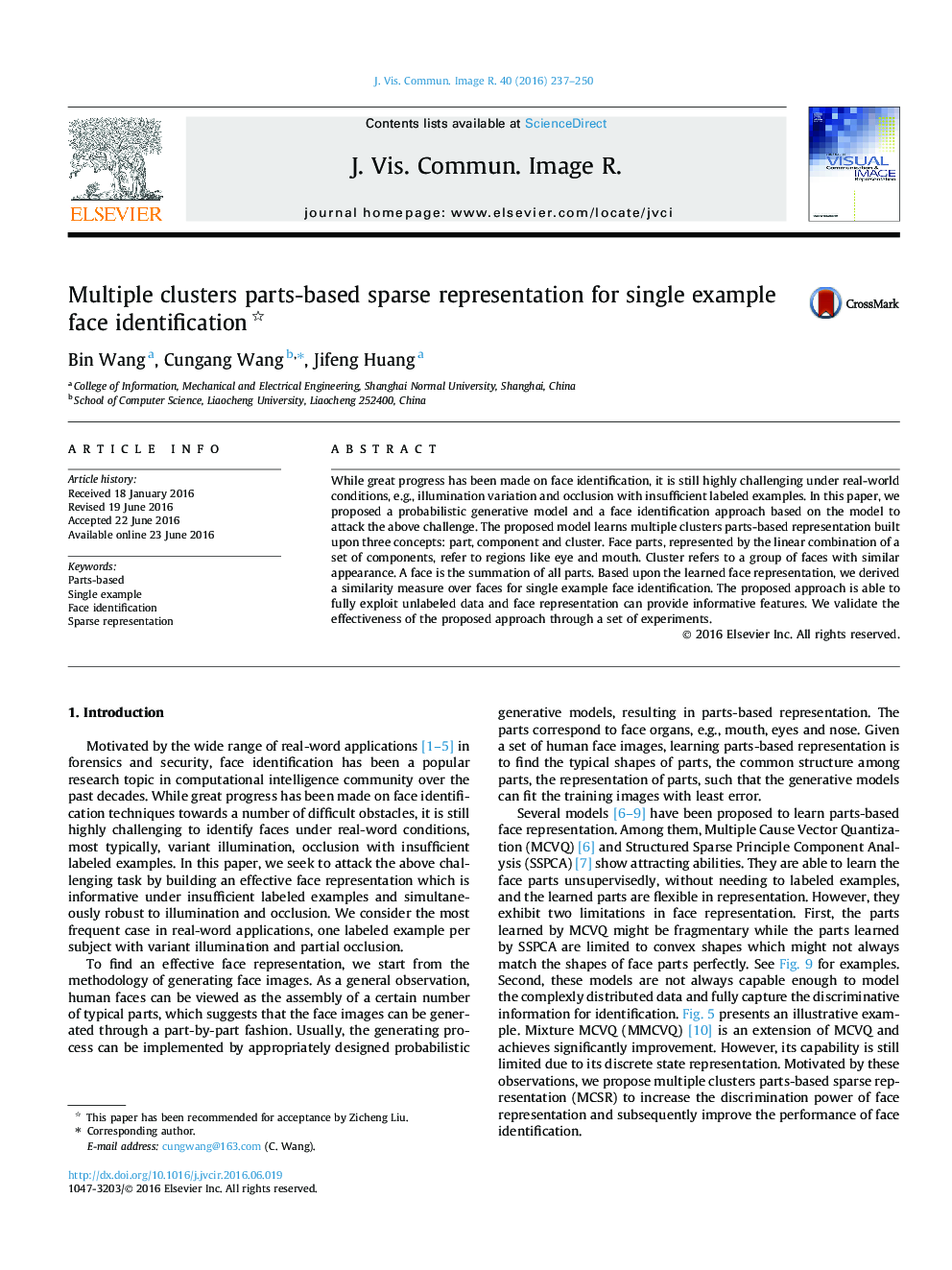| Article ID | Journal | Published Year | Pages | File Type |
|---|---|---|---|---|
| 528507 | Journal of Visual Communication and Image Representation | 2016 | 14 Pages |
•Parts-based face representation and similarity measure based on a generative model.•A posterior regularization based inference approach to learn better face parts.•Multiple clusters representation to improve the complex data modeling capacity.
While great progress has been made on face identification, it is still highly challenging under real-world conditions, e.g., illumination variation and occlusion with insufficient labeled examples. In this paper, we proposed a probabilistic generative model and a face identification approach based on the model to attack the above challenge. The proposed model learns multiple clusters parts-based representation built upon three concepts: part, component and cluster. Face parts, represented by the linear combination of a set of components, refer to regions like eye and mouth. Cluster refers to a group of faces with similar appearance. A face is the summation of all parts. Based upon the learned face representation, we derived a similarity measure over faces for single example face identification. The proposed approach is able to fully exploit unlabeled data and face representation can provide informative features. We validate the effectiveness of the proposed approach through a set of experiments.
